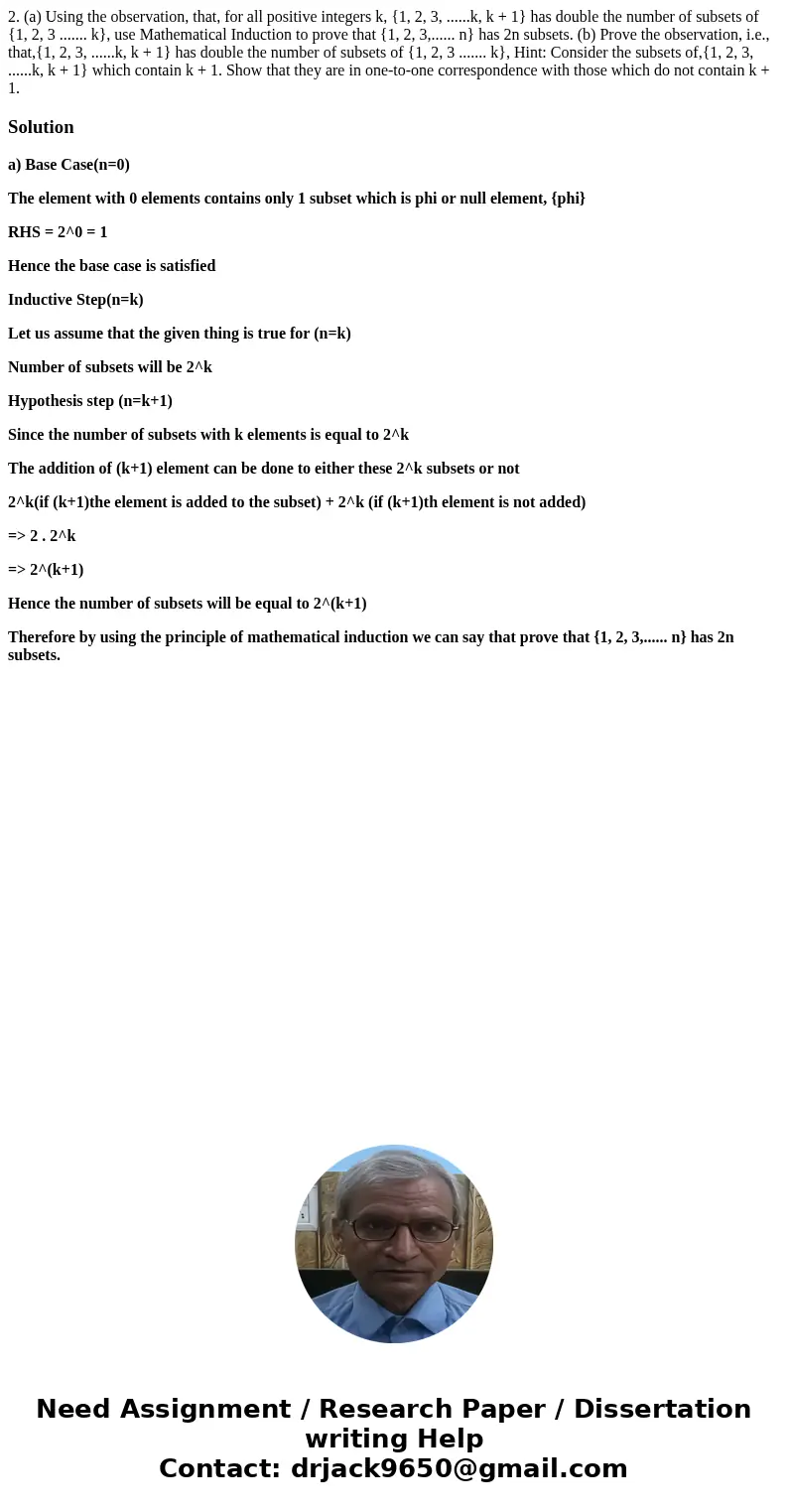2 a Using the observation that for all positive integers k 1
2. (a) Using the observation, that, for all positive integers k, {1, 2, 3, ......k, k + 1} has double the number of subsets of {1, 2, 3 ....... k}, use Mathematical Induction to prove that {1, 2, 3,...... n} has 2n subsets. (b) Prove the observation, i.e., that,{1, 2, 3, ......k, k + 1} has double the number of subsets of {1, 2, 3 ....... k}, Hint: Consider the subsets of,{1, 2, 3, ......k, k + 1} which contain k + 1. Show that they are in one-to-one correspondence with those which do not contain k + 1.
Solution
a) Base Case(n=0)
The element with 0 elements contains only 1 subset which is phi or null element, {phi}
RHS = 2^0 = 1
Hence the base case is satisfied
Inductive Step(n=k)
Let us assume that the given thing is true for (n=k)
Number of subsets will be 2^k
Hypothesis step (n=k+1)
Since the number of subsets with k elements is equal to 2^k
The addition of (k+1) element can be done to either these 2^k subsets or not
2^k(if (k+1)the element is added to the subset) + 2^k (if (k+1)th element is not added)
=> 2 . 2^k
=> 2^(k+1)
Hence the number of subsets will be equal to 2^(k+1)
Therefore by using the principle of mathematical induction we can say that prove that {1, 2, 3,...... n} has 2n subsets.

 Homework Sourse
Homework Sourse